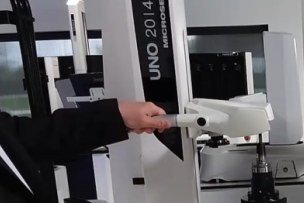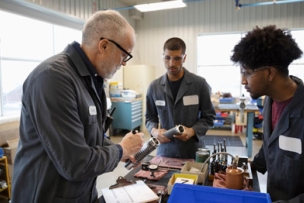Seco is one of the world’s largest providers of comprehensive metal cutting solutions for milling, stationary tools, holemaking and tooling systems. For over 80 years, we have been more than just a cutting tool provider. We develop and supply the technologies, processes and supports that manufacturers depend on to maximize productivity and profitability.
You don’t have to look far to find examples of how artificial intelligence (AI) is impacting people’s daily lives. Evidence of computers that can simulate intelligent behavior can be seen in the digital assistants – like Amazon’s Alexa and Apple’s Siri – that have recently been springing up in homes across the planet. You can also see it in services like Google Translate and in call centers for products like Microsoft software where AI-powered ‘chatbots’ greet people and deal with their problems. The new generation of autonomous cars now hitting the roads also uses AI. And artificial intelligence is also quickly taking off in the industrial production process – and in general manufacturing in particular. While robots and automation in manufacturing are nothing new, the new generation of robots stand apart from their predecessors in that they are beginning to think for themselves, make decisions, and learn without further programming.
A typical industrial robot in use today is programmed to do a single job very precisely and accurately. However, each time a production run changes, such robots need to be reprogrammed from scratch, a task that takes time and technical expertise. By contrast, robots equipped with AI may be capable of ‘machine learning’ – the ability to reprogram themselves by practicing and learning a task. To achieve this, they rely on a deep neural network that controls, for example, a robotic arm. Over time, the network varies the arm’s behavior and favors actions that lead it closer to an end goal, like picking up a particular object. The process can also be sped up by having lots of robots work in concert, then sharing what they have learned.
This trend is likely to see industrial robots move out of the cages in which they are currently positioned for safety reasons and onto the factory floor where they will perform increasingly complex tasks and interact and collaborate with human workers. This opens the way for a hybrid workforce where people and machines work together.
According to market intelligence consultancy IDC, by 2020 some 60% of plant floor workers at the 2,000 largest manufacturing companies in the world will work alongside assistance technologies that enable automation, such as robotics, 3D printing, AI, and artificial reality or virtual reality.
One example is Swedish-Swiss company ABB’s YuMi robot, which has two arms, is equipped with AI, sensors and cameras, and is capable of collaborating with humans to perform quite delicate tasks.
To enable artificial intelligence and machine learning in manufacturing environments, massive amounts of data must be analyzed from a range of input sources such as metalworking tools, mining equipment, worker equipment and databases. This allows AI to create a holistic view of historic, real-time and projected operations, and control a vast network of interconnected sensors and robotics within a mine or plant. Such a set-up is variously referred to as Industry 4.0 or the intelligent factory.
While it’s still early days for the trend to AI in the industrial sector, things are moving ahead rapidly. For example, earlier this year ABB and IBM announced they would cooperate to accelerate the development of the area by combining ABB’s expertise in robotics and automation with IBM’s AI, Watson.
One such use of the collaboration will be having Watson help to find defects by analyzing real-time production images. Up until now such inspections have been done manually in a slow and error-prone process. Putting AI to work promises to increase the volumes flowing through production lines while improving accuracy and consistency through faster intervention from quality-control experts.
Intelligent robots are not the only area where manufacturing companies are looking at deploying AI. So-called ‘chatbots’ are becoming commonplace in consumer-facing sectors as a way to make customer service more efficient and user-friendly.
Chatbots are computer programs that use artificial intelligence to conduct naturally flowing conversations with people. They are used by companies to provide help and assistance to customers or employees.
Seco is looking at the possibility of using chatbots in its customer interfaces to improve and speed up service for routine inquiries or tasks. “We are exploring and evaluating various options and how they could best work together with our other systems while also having the capacity to learn and evolve,” says Brent Wilkinson, E-commerce Solutions Owner at Seco.
Chatbots could take charge of the larger volumes of relatively simple and routine inquiries, leaving customer service staff more time to deal with more complex issues.

.jpg?itok=clvY6OP5)






Talk to Us!
Leave a reply
Your email address will not be published. Required fields are marked *